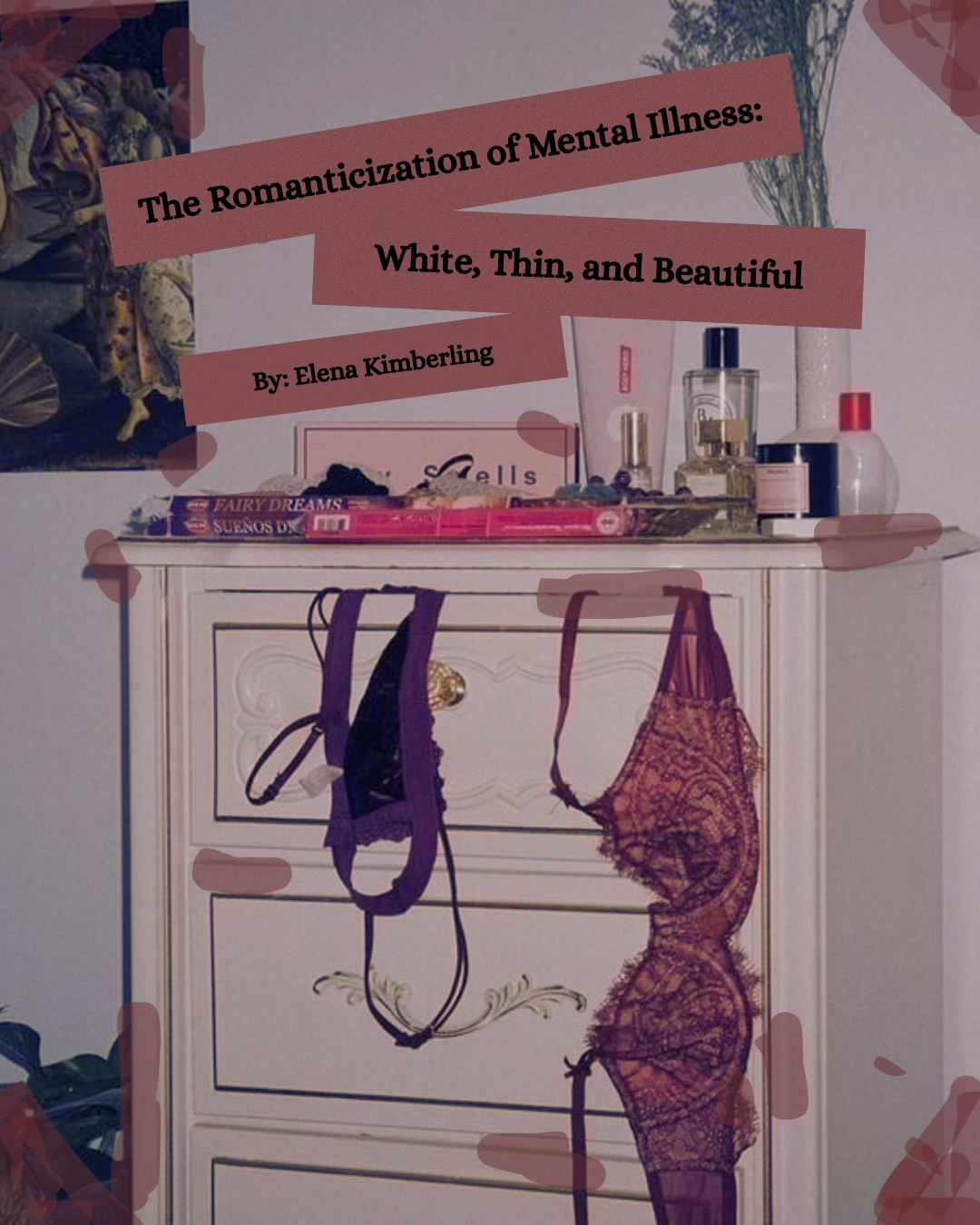Mental illness. A phrase that is so charged, but surrounds our society. It’s something that becomes particularly hard to demonstrate in forms of media, as we cannot understand a person's full psyche. The way in which we view mental illness is entirely reliant on the person with said illness and their placement within society. In many forms of media, mental illness is placing the character at the forefront of the story, meant to serve as a means of entertainment. We can show praise for movies like Fight Club or Shutter Island for this, but it isn’t a true representation if it only surrounds white men.
This is where we come to a place of romanticization and fetishization. We are expected to start to ‘other’ these characters, and by displaying them as white, thin, beautiful women, it becomes more “digestible” for viewers. This, of course, begins the introduction of the sexy, crazy woman. A character we see presented in is Sam in “The Perks of Being a Wallflower”. She is battling through her own emotional demons throughout the course of the story. She has memories of her own abuse, which allows her to connect to the main character, but she is still this eccentric, beautiful character who still has feelings for the main character despite their significant age gap. The crazed version of herself is downplayed to demonstrate these elements of emotional connection. At the end of the day, she isn’t a mentally ill character, just the love interest.
We then see how these white characters are praised and sympathized with, in a way their non white counterparts are not. Amy from Gone Girl is viewed as iconic for her behavior, and she is, of course, white, crazy, and thin. And because the book-turned-movie comments on the very apparent misogyny from her husband, these more controversial topics are never aligned with the movie. It’s perceived as a man-hating movie rather than understanding the greater subject of Amy’s identity in society. I will clarify that this critique doesn’t take away from the movie itself; I am just commenting on the very apparent discrimination present in the constant media we consume.
Another example of this is Angelina Jolie’s character Lisa in Girl, Interrupted. The movie is based on a book written about the true visit to a mental hospital by Susannah. But the movie takes many liberties when telling the story, mainly how Lisa has a much bigger role in the film. She is crazy and sexually promiscuous, juxtaposed to Susannah’s character, who is completely careless and allows those around her to be collateral. But by having her played by Angelina Jolie, it contributes to this idolization and sexualization of the character, with many people aligning with it.
Women of color are rarely properly represented for their mental shortcomings in the media we consume. When they demonstrate elements of mental illness, it is represented as either completely “batshit” or acting as a result of their tumultuous childhood. They aren’t given the same grace of being idolized and sympathized with by viewers. One particular example is the movie “Precious”; the movie follows a black 16-year-old plus-sized girl growing up in the bad areas of Harlem. She repeatedly suffers both mental and physical abuse from her parents. The story is in all her being a survivor after being impregnated by her father, but she isn’t given the same grace as her white counterparts. She isn’t crazy in the fun and sexual way but viewed as another black character with awful parents.
The Virgin Suicides displays a slightly different image because the movie itself comments on this fetishization. The movie is seen through these young boys' perspective who become absolutely infatuated with the sisters. They buy into this craziness, hoping they can conquer these women. Particularly, the character of Lux is this crazy sexy girl who becomes the object of desire to all these men. But still, when she kills herself at the end, it comes as a complete surprise; her mental illness wasn’t seen as something in reality but part of this “manic pixie dream girl” ideal. She is allowed to display these obvious inner problems because she herself is held to a greater standard. She isn’t scrutinized because she is given the space to act out, and complete perfection isn’t expected.
When were not meant to romanticize the character at all, they will be changed to an “uglier woman” or a woman of color: like in the movies Misery or Ma, Both are viewed as completely insane and out of control, and this is greatly supported by their physical perceptions in society. Their looks as seen as an attribute to their inner feelings, as if their looks somehow make them less worthy in society and therefore more acceptable to be insane.
Characters of color can only be represented in two ways. Completely “crazy” or a very “well-behaved” archetype.. For example in the show “Skins”: most of the white women are presented with some elements of mental illness, acting out but being quickly forgiven. Most notably Effy and Cassie, they represent this crazed sexualized version of “crazy” that contributes to the fetishization of the characters. While the black character Jazz, has a very “tame” life and is very rarely written into storylines. She does not have the potential to be mentally ill as she would face far greater scrutiny.
When searching for movies with women, hundreds of results show up with white, skinny, and beautiful leads, while searching for movies with mentally ill women of color, the results are much fewer and far between. Women are so aggressively underrepresented in media and very often seen as “token” characters to move the white characters story along. women of color.
Written by Elena Kimblerling
Edited by Cassidy Hench and Elisabeth Kay
Graphic by Laura Deaton

No Comments.